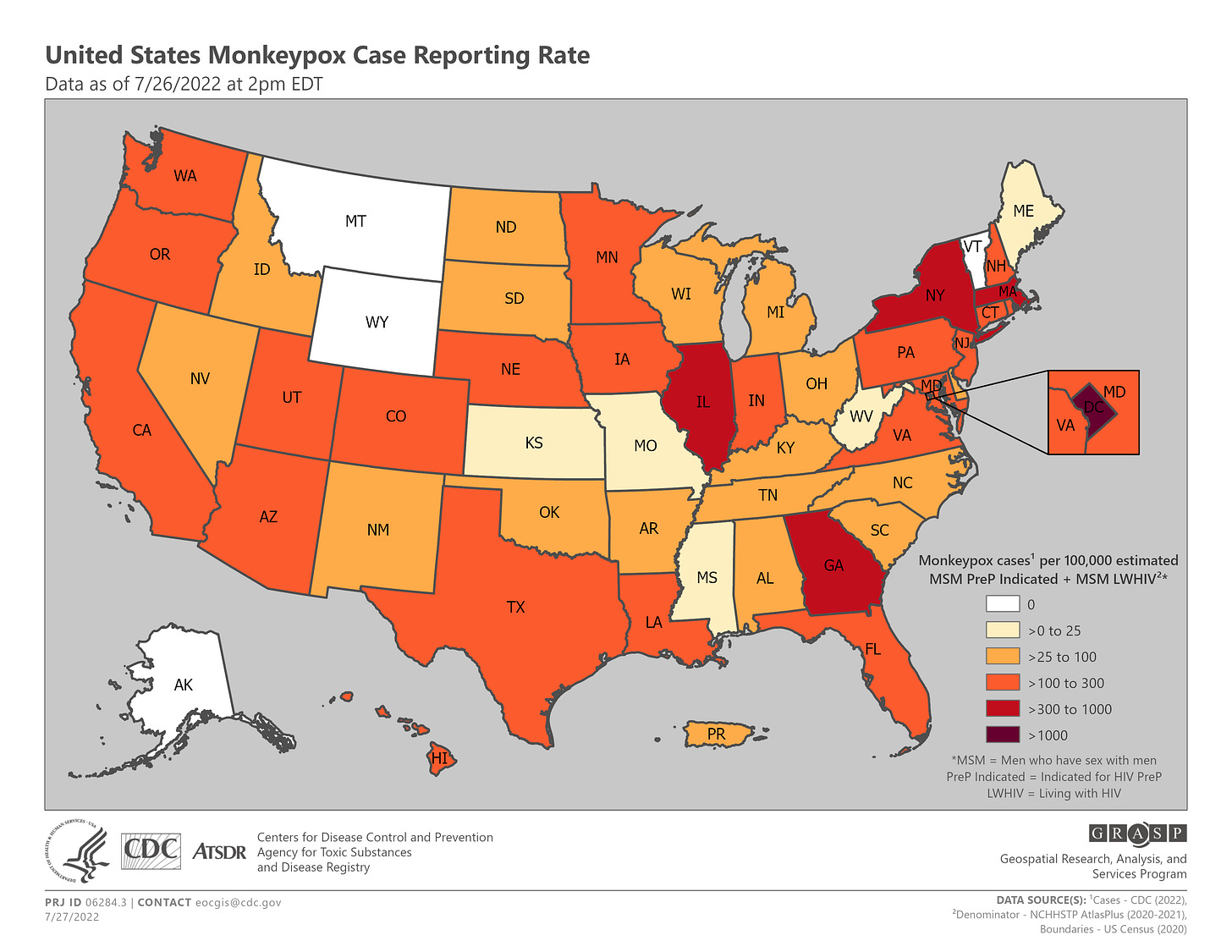This afternoon, the Centers for Disease Control and Prevention released the first extensive, detailed technical report on the U.S. monkeypox epidemic.
The agency first released a technical report describing the pediatric acute hepatitis outbreak in June, patterned after the UK Health Security Agency’s (UKHSA) excellent reports on SARS-CoV-2 variants and monkeypox. The information shared in the UKHSA reports has been invaluable for helping public health officials around the world understand emerging threats. I am pleased that CDC is beginning to share similar work.
I encourage a full review of the new U.S. report. The following highlights stood out to me:
Over 99% of cases are in men (or assigned male sex at birth), and 99% of cases are in men who have sex with men. This confirms that men who have sex with men are currently the primary population at risk, and that public health interventions (e.g., outreach, education, vaccination, treatment) should be tailored to them.
The mean incubation period was estimated at 7.6 days (CrI 6.2-9.7). with 95% of cases developing symptoms within 17.1 days. The time from exposure to rash onset is slightly longer, at 8.7 days (CrI 6.9-11.7). CDC has previously said that fever, lymphadenopathy and malaise are commonly reported before rash onset, so those may be the symptoms that patients are experiencing in the 2 days before the rash becomes apparent.
The median number of days between symptom onset and a positive test result was 8 days, which has remained stable or declined slightly over time. In my opinion, this is one of the most important findings of the report. Rapid diagnosis is critical for enabling public health interventions which are needed to break chains of transmission. A diagnosis is also what enables people who are affected to receive proper treatment. I am glad that CDC chose to report this important metric week by week so that trends can be assessed. Time to diagnosis can and should be reduced through education, case finding, accessible diagnostic testing, and quick turnaround times for lab results.
There are several tables containing information on priority research questions and the scientific studies that CDC and partners are conducting to get answers. These will be of particular interest to experts.
Per capita, Illinois, New York, Massachusetts, Georgia [edit: and Washington, D.C.] are the most heavily affected states. Previously, only unadjusted case counts by state were reported.

One caveat: The technical report is based on a subset of cases, not the complete roster, because CDC does not have detailed information on every case. This is normal. Numbers and even top-line results may change over time as additional information becomes available.
I already plan to use this information to tailor my key messages around monkeypox. I will also follow it closely to understand 1) whether we are making progress toward containment; 2) whether the virus is moving into new subpopulations and 3) what scientific information we can expect based on investigations the agency is conducting.
Disclosure: I recently worked at CDC, where I contributed to early work on the acute hepatitis and monkeypox technical reports.




